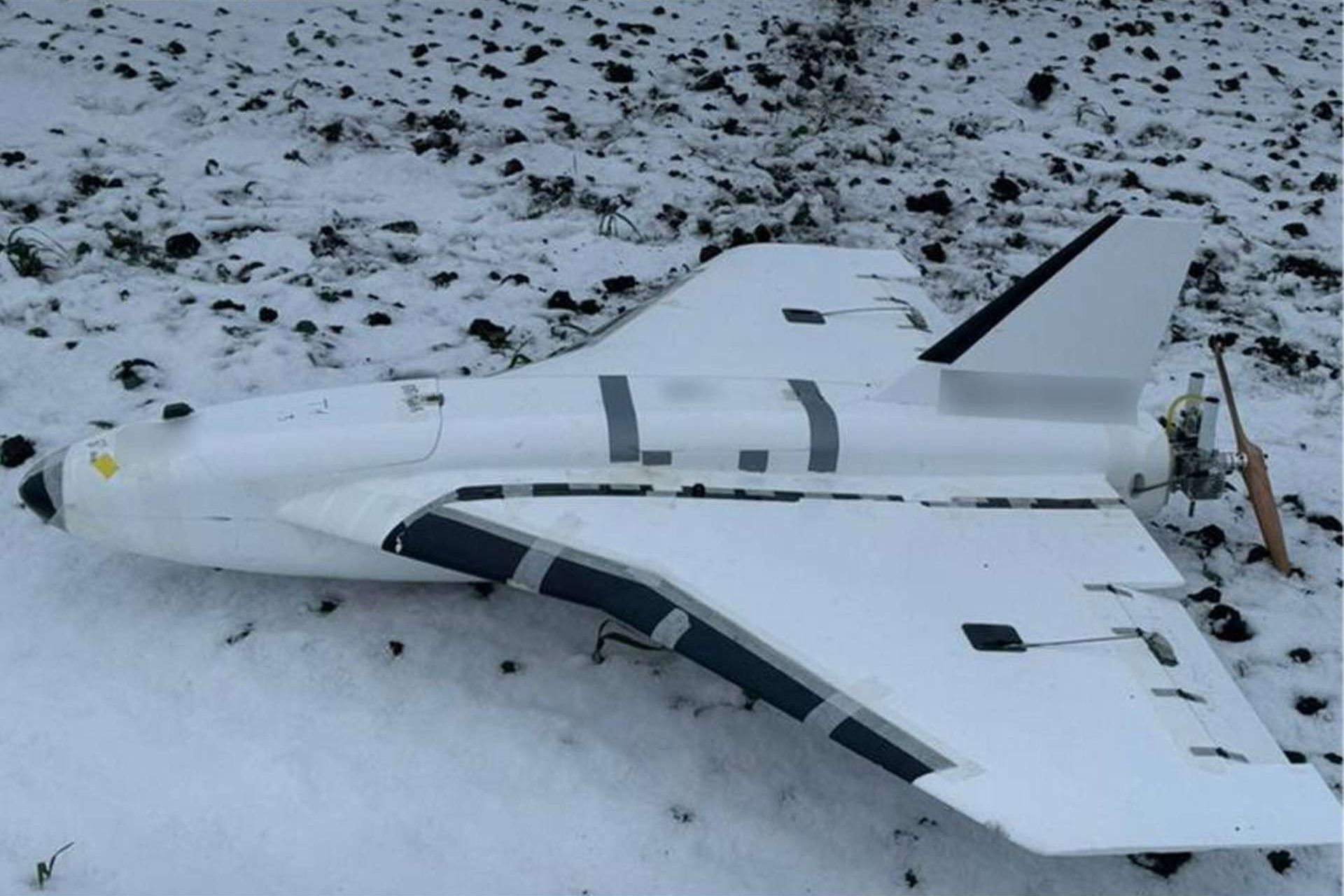Breaking News
Ukrainian FPV Drone Triumphs Over Russian Gerbera UAV in Unprecedented Interception.
According to information published by @front_ukrainian on January 11, 2025, Ukrainian forces have demonstrated their growing capabilities by successfully deploying an FPV (First-Person View) drone to intercept and neutralize a Russian Gerbera UAV.
Follow Army Recognition on Google News at this link

A Ukrainian FPV drone successfully intercepts and neutralizes a Russian Gerbera UAV. (Picture source: Ukrainian Forces)
The Gerbera UAV, deployed by Russian forces, is a sophisticated unmanned aerial system designed for versatility in combat and support roles. It is commonly used for electronic reconnaissance, aerial decoys, and, in some configurations, offensive operations. Technologically, the Gerbera is equipped with a range of advanced features designed to ensure mission success in contested environments.
One standout feature of the Gerbera is its Controlled Radiation Pattern Antenna (CRPA), which allows the UAV to maintain a secure satellite link, even in the presence of electronic jamming. Additionally, its telemetry systems enable reliable communication with ground operators, providing real-time situational awareness and control. Despite its technical advancements, the Gerbera is vulnerable to small, highly agile drones like the FPV systems employed by Ukraine.
FPV drones, originally designed for recreational racing and hobbyist use, have become a cornerstone of Ukraine's innovative approach to modern warfare. These drones are characterized by their lightweight design, high maneuverability, and low cost. Equipped with cameras transmitting real-time video feeds, FPV drones allow operators to visually guide them with extraordinary precision.
In military applications, FPV drones have been adapted for multiple roles, including reconnaissance, explosive delivery, and aerial interception. Their ability to physically collide with or detonate near enemy UAVs provides an effective countermeasure against hostile drones.
In this engagement, a Ukrainian FPV drone operator identified the Russian Gerbera UAV and executed a precise interception maneuver. The FPV drone’s agility and speed allowed it to close the distance rapidly, targeting the Gerbera from an advantageous position above the UAV. By descending directly onto the Gerbera, the FPV drone neutralized the target with a kinetic strike.
This operation underscores the tactical effectiveness of FPV drones in counter-UAV roles. Unlike conventional air defense systems, which rely on expensive missiles or electronic warfare assets, FPV drones offer a cost-effective and agile solution. They also allow for faster response times, enabling operators to engage and destroy threats with minimal delay.
On the Russian side, the interception of the Gerbera underscores the need for further adaptations in UAV design and tactics. Recent reports suggest that Russian operators are already equipping reconnaissance drones with rear-view cameras to detect and evade incoming FPV drones. This iterative cycle of adaptation and counter-adaptation is emblematic of modern drone warfare.
While FPV drones have proven their utility, they are not without limitations. Their operational range and endurance are constrained by battery technology, limiting their effectiveness in extended engagements. Additionally, their reliance on radio frequencies for control and video transmission makes them susceptible to electronic jamming and other countermeasures. To address these challenges, advancements in battery efficiency, autonomous navigation, and anti-jamming technologies are critical.


























